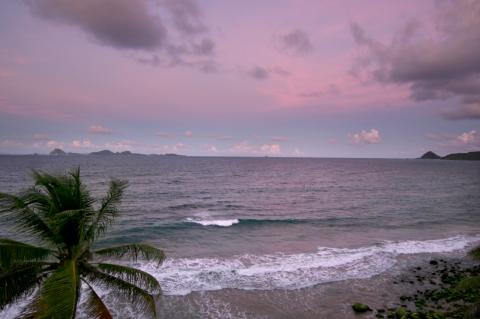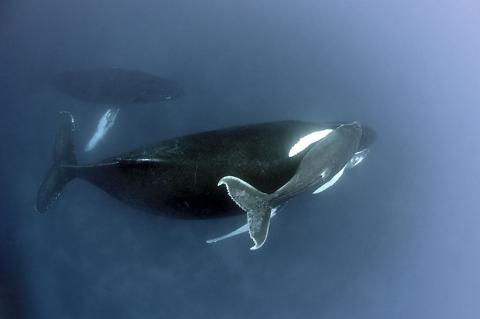X-Ray Mag #41
Special coverage of the Cayman Islands by two renown residents -- take a tour with Cathy Church and Lawson Wood to Cayman Brac, Little Cayman, Stingray City and the new artificial reef of the USS Kittiwake off Grand Cayman Island.
Don Silcock takes us to the mystical haven of Halmahera in the Maluku Islands. Read Rob Rondeau on the issue of wrecks leaking fuel; Mark Powell on the intricacies of team diving; Aaron Gekoski on the shark finning crisis in Mozambique and the documentary film, Shiver; Keri Wilk on the use of snoots in underwater photography; Oceanic design inspired by the sea; Artist Sayaka Kajita Ganz on her wondrous fish sculptures made of reused plastic and metal objects; plus current news about recent discoveries in marine ecology and shipwrecks, new equipment, industry and training events, travel tips, sharks, whales, dolphins, sea turtles, and more...
Main features in this issue include:
Cayman Islands —A guided tour with Cathy Church
When people ask me where my favorite dive spots in the entire world are, I have to stop and give it some serious thought. I like Fiji for soft corals, Chuuk for wrecks, Indonesia for critters, the Solomon Islands for an all-around trip and the U.S. west coast for kelp. But I usually reply that I like wherever I am going next, and that often includes right here in the Cayman Islands where I have the good fortune to live.
Grenada
The island of Grenada is affectionately known as the Spice Isle for its exotic spices of nutmeg, clove and cinnamon. Indeed, as we stepped off the plane, its warm, fragrant breezes welcomed us. Just a few hours earlier we were shivering in the drizzle and cold, wrapped in several layers of clothing dreaming of this exact moment.
Binca, the hotel’s concierge, had everything prepared and our rooms were gorgeous. Set just above the resort’s white sand pool, our spacious suite came replete with a full kitchen, private balcony, large flat screen and fresh flowers.
Humpbacks — The Tale of a Drive-by Fluking
Humpback whales (Megaptera novaeangliae) are intelligent, communicative, aerobatic, social, curious, playful and sometimes devious mammals that can grow to 16 meters in length, weigh 41tonnes (41,000 kg) and live over 50 years.
My visit to Silver Bank is aboard the Turks and Caicos Aggressor II, one of only three vessels with the necessary permit to enter the sanctuary. Amanda Bryan, the Aggressor II’s captain and my inflatable boat guide for the day, spots a mother and calf slowing swimming toward us.
Sayaka Kajita Ganz
"My working process is reminiscent of my experiences growing up in several different countries, of being disconnected from the place I was born. Then, I began searching for a new community where I truly belong," said Ganz. "I find discarded objects from peoples’ houses and give them a second life, a new home."
"What intrigues me about the underwater realm is that you can see and feel the life energy of not just the individual fish, but the entire school, the entire ocean current, the entire planet."
— Sayaka Kajita Ganz
Snoots
When I began shooting underwater 15 years ago, the underwater photography world was much smaller than it is today. Traveling with oodles of slide film, being restricted to 36 exposures per dive, and requiring an intimate understanding of how light works are just a few factors which kept underwater imaging from being widely popular.
What was once a very niche hobby, pursued only by the most determined and passionate individuals, has now become almost as common as scuba diving itself.
Stingray City
Like it or hate it, Grand Cayman Island is still home to one of the most legendary animal encounters on the planet. Dubbed as the world’s greatest 12-foot dive, the region is located inside the northern barrier reef, which protects North Sound from the vagaries of wind and rough seas.
The stingray most commonly found in the Cayman Islands is the Southern Stingray (Dasyatis americana) and the two locations where the stingrays congregate in the largest numbers are Stingray City, which is around 3-5 metres deep (10-17ft) and the Sandbar, a natural sandy plateau around only
Stingrays
"Stingray kills television host"
The headlines soon spread all over the world when the famous Australian philanthropist and television host, “crocodile hunter” Steve Irwin, was recently killed by a stingray, also known as a whiptail stingray.
The ‘sting’, which gives these fishes their common name, is a modified dermal denticle mounted near the base of the tail, about one-third along its total length. The sting consists of a blade-like barb with serrations along both edges and a venom gland at the base. (see figure next page)
Team Diving
Recreational diver training agencies have always encouraged divers to adopt the buddy system and always dive in buddy pairs. Diving in a group made up of more than two people has been described as undesirable, while most agencies explicitly ban solo diving.
This view must be balanced against the teachings of the technical diver training agencies who encourage divers to dive as a team and often cite three as the optimum team size.










